The American deserts transform dramatically after sunset, unveiling a remarkable nocturnal ecosystem that remains hidden from most human eyes. As temperatures cool from the day’s scorching heat, a diverse array of specially adapted creatures emerges from burrows, crevices, and shelters to hunt, mate, and thrive in the darkness. These nocturnal desert dwellers have evolved fascinating adaptations to navigate and survive in one of North America’s most challenging environments. From elusive predators with heightened senses to resourceful scavengers that can detect prey from remarkable distances, the nighttime desert teems with activity that contrasts sharply with its seemingly barren daytime appearance. This article explores the captivating world of animals that roam the U.S. desert at night, examining their unique adaptations, behaviors, and the crucial ecological roles they play in these arid landscapes.
The Desert Environment After Dark

American deserts undergo a dramatic transformation after sunset. Daytime temperatures that often soar above 100°F (38°C) can plummet by 30-40 degrees at night, creating a more hospitable environment for animal activity. The Sonoran, Mojave, Chihuahuan, and Great Basin deserts that span the American Southwest exhibit this extreme temperature variation, known as diurnal temperature fluctuation. This cooler nighttime environment provides an opportunity for desert animals to conserve water, hunt more efficiently, and move about with less risk of dehydration and heat stress. The darkness also offers protection from diurnal predators and reduces competition for resources. Starlight and moonlight illuminate the desert landscape differently than harsh sunlight, creating new shadows, silhouettes, and visibility conditions that nocturnal creatures have evolved to navigate masterfully. These environmental factors have shaped the evolution of specialized nocturnal adaptations among desert wildlife.
Kit Foxes: Desert Night Hunters

The kit fox (Vulpes macrotis) is a diminutive yet remarkably adapted nocturnal predator of American deserts. Weighing just 3-6 pounds, these foxes possess distinctive large ears that serve a dual purpose: they provide excellent hearing for detecting prey and act as heat dissipators to regulate body temperature. Kit foxes are primarily active from dusk until dawn, when they hunt for kangaroo rats, mice, insects, and occasionally birds and reptiles. Their light tan or yellowish-gray coat provides perfect camouflage against desert sands, while their padded feet allow silent movement across various desert terrains. Kit foxes are resourceful den-builders, creating extensive underground networks with multiple entrances that provide escape routes from larger predators and shelter from extreme temperatures. Their exceptional ability to derive moisture from their prey means they can survive without drinking free-standing water, a crucial adaptation to desert life. Despite their perfect desert adaptations, kit fox populations face challenges from habitat loss and fragmentation across their range.
Kangaroo Rats: Masters of Water Conservation
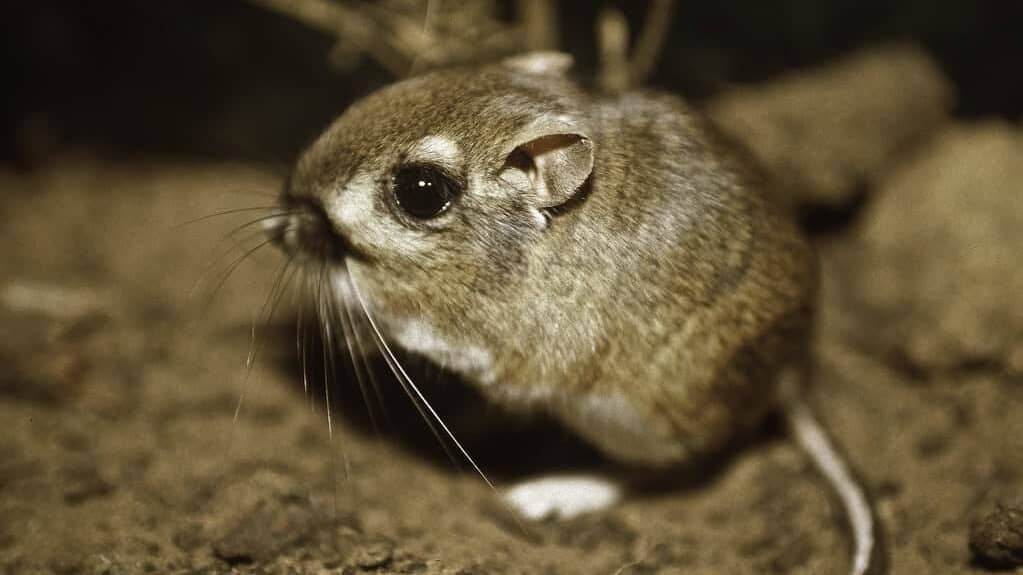
Kangaroo rats (Dipodomys species) exemplify extraordinary desert adaptation among nocturnal mammals. These remarkable rodents have evolved to survive without ever drinking water, instead obtaining all necessary moisture from the seeds and plants they consume. Their specialized kidneys produce highly concentrated urine, while their nasal passages recapture moisture from exhaled breath. Kangaroo rats emerge at night to forage, using their powerful hind legs to bound across the desert floor at speeds up to 10 feet per second, which helps them evade predators like owls and snakes. Their large eyes provide excellent night vision, while their acute hearing can detect the slightest movement of approaching threats. Perhaps most impressively, some species can hear the low-frequency sounds of hunting owls and rattlesnakes, giving them a crucial advantage in survival. Kangaroo rats store collected seeds in underground chambers, where the desert’s low humidity prevents spoilage. These ecological engineers play a vital role in desert ecosystems by dispersing seeds and creating habitat disturbances that benefit plant diversity.
Desert Owls: Silent Aerial Predators
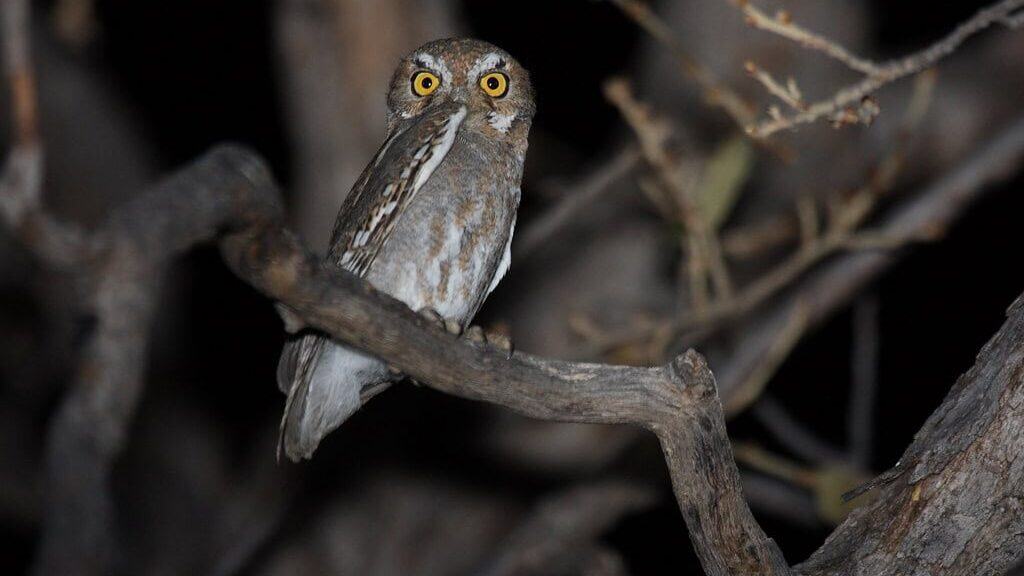
Several owl species have mastered the art of nocturnal hunting in America’s deserts. The Great Horned Owl (Bubo virginianus) is among the most adaptable, using its powerful talons and exceptional low-light vision to capture prey ranging from rodents to rabbits. However, it’s the Elf Owl (Micrathene whitneyi)—the world’s smallest owl at just 5-6 inches tall—that truly exemplifies desert specialization. These tiny predators often nest in abandoned woodpecker holes in saguaro cacti and hunt insects, scorpions, and small vertebrates. The Western Screech Owl (Megascops kennicottii) is another desert specialist that hunts from perches, dropping silently onto unsuspecting prey. All desert owls share remarkable adaptations: specialized feather structures that enable silent flight, asymmetrically placed ears that create a three-dimensional sound map, and eyes that contain far more rod cells than human eyes, allowing them to see in light levels 100 times dimmer than what humans require. Their facial discs act as satellite dishes, collecting and directing sound to their ear openings. These combined adaptations make desert owls among the most efficient nocturnal hunters in these harsh environments.
Coyotes: Adaptable Desert Opportunists
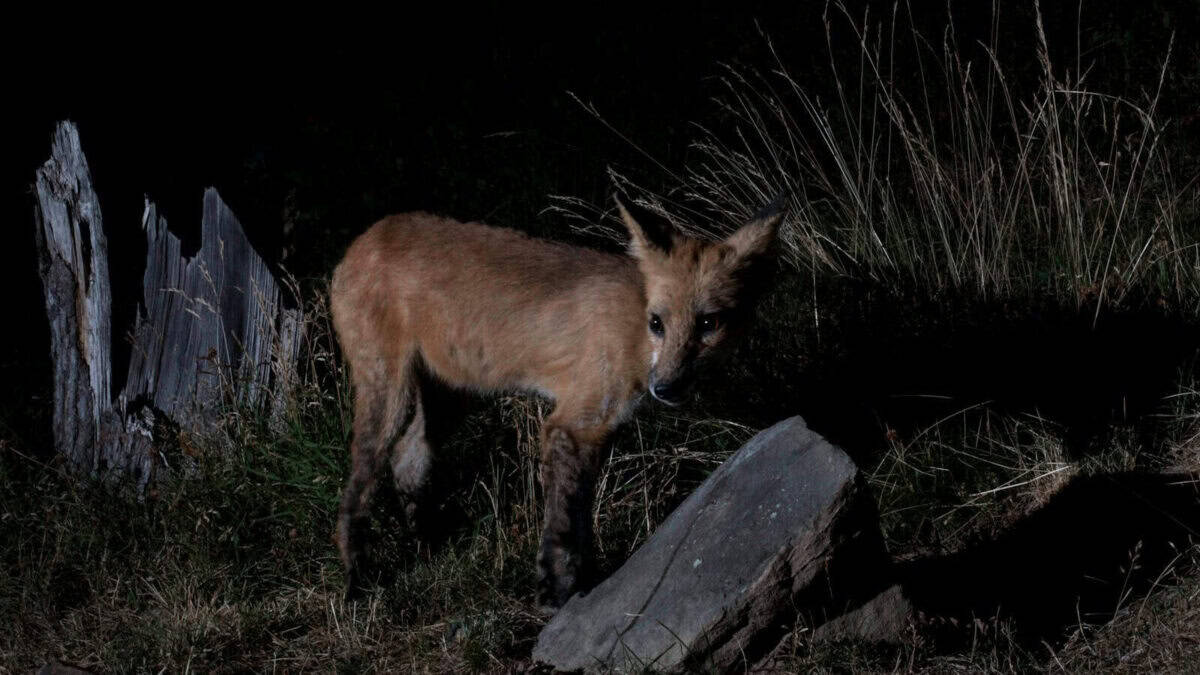
The coyote (Canis latrans) stands as one of the most successful nocturnal desert predators due to its remarkable adaptability. Although active during various times, coyotes in desert regions predominantly hunt at night to avoid heat stress and target nocturnal prey. Their varied diet encompasses everything from rodents and rabbits to fruits, insects, and carrion, allowing them to thrive where more specialized predators might struggle. Desert coyotes have developed several physiological adaptations, including efficient kidney function that reduces water loss and the ability to lower their metabolic rate during food scarcity. Their acute senses—particularly their hearing, which can detect rodents moving underground—make them formidable hunters in the desert darkness. Coyotes communicate through a complex vocabulary of yips, barks, and howls that often intensifies at night, serving to mark territory and coordinate pack activities. Despite decades of intensive human persecution, coyote populations have expanded throughout North America, demonstrating their extraordinary resilience. In desert ecosystems, they play a crucial role in controlling rodent populations and maintaining the balance of mesopredator communities.
Rattlesnakes: Heat-Sensing Desert Predators
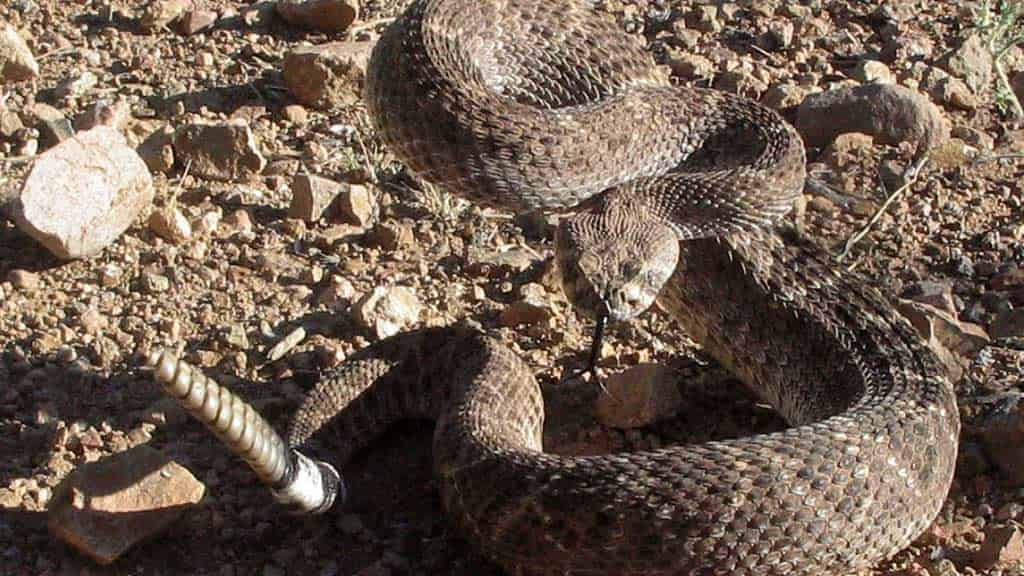
Several rattlesnake species patrol American deserts after dark, including the Western Diamondback (Crotalus atrox), Mojave Rattlesnake (Crotalus scutulatus), and Sidewinder (Crotalus cerastes). These pit vipers possess specialized heat-sensing organs located in pits between their eyes and nostrils, allowing them to detect temperature differences as small as 0.003°C and effectively create thermal images of warm-blooded prey in complete darkness. The sidewinder has evolved a unique sideways locomotion that minimizes contact with hot sand and leaves distinctive J-shaped tracks. Most desert rattlesnakes hunt using an ambush strategy, patiently waiting for prey to approach before striking with remarkable speed—up to 175 mph in some species. Their venom delivery system has evolved specifically for the small mammals that comprise their primary diet, containing hemotoxic and neurotoxic components that quickly immobilize prey. Contrary to popular belief, rattlesnakes use their iconic rattles primarily as a warning device to avoid confrontation rather than to announce an attack. During summer months, desert rattlesnakes become almost exclusively nocturnal, hunting in the cooler temperatures and returning to shelters before the morning heat intensifies.
Desert Bighorn Sheep: Nighttime Wanderers
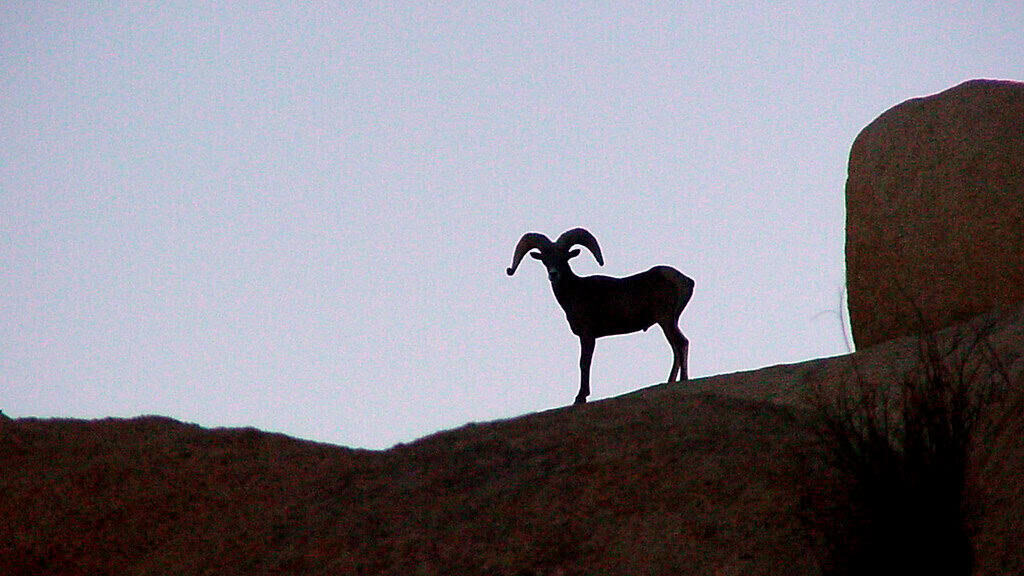
While not strictly nocturnal, Desert Bighorn Sheep (Ovis canadensis nelsoni) frequently extend their activities into nighttime hours, especially during summer months when daytime temperatures become extreme. These iconic ungulates have evolved remarkable adaptations for desert life, including the ability to lose up to 30% of their body weight through dehydration and rapidly rehydrate when water becomes available. Their specialized two-part hooves feature a hard outer edge for traction on rocky terrain and a soft inner pad that provides grip—enabling their famous ability to navigate seemingly impossible cliff faces even in low light conditions. Desert bighorns possess exceptional night vision with horizontal pupils that provide a panoramic view of their surroundings, crucial for detecting predators like mountain lions that often hunt during twilight hours. During hotter months, bighorns may graze and travel extensively during moonlit nights when temperatures are more comfortable. Their intricate knowledge of desert landscapes includes memorized routes to water sources that may be visited under the cover of darkness to avoid predation. Conservation efforts have helped stabilize desert bighorn populations after significant declines in the 20th century.
Bats: Desert Night Aerial Specialists
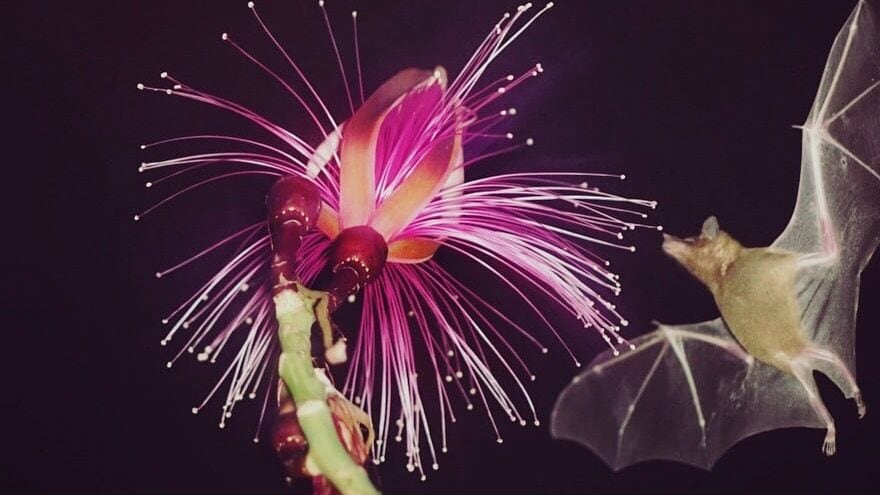
American deserts host a remarkable diversity of bat species that dominate the night skies, with the Sonoran Desert alone supporting over 28 different species. The Lesser Long-nosed Bat (Leptonycteris yerbabuenae) and Mexican Long-tongued Bat (Choeronycteris mexicana) serve as critical pollinators for iconic cacti including saguaro and organ pipe, feeding on nectar and pollen during nighttime foraging trips that can cover up to 30 miles. The Pallid Bat (Antrozous pallidus) exhibits unusual behavior for a bat, often landing on the desert floor to capture scorpions, centipedes, and large insects. Most desert bats use echolocation to navigate and locate prey, emitting high-frequency calls that bounce off objects and return as echoes that create detailed sound pictures of their surroundings. Desert bat species have evolved physiological water conservation mechanisms, including the ability to concentrate urine and recover moisture from respiratory exhalation. Many desert bats enter torpor—a state of decreased physiological activity—during daylight hours to conserve energy and water. These flying mammals provide essential ecosystem services by controlling insect populations and dispersing seeds, while larger species like the Western Mastiff Bat (Eumops perotis) can consume up to half their body weight in insects nightly.
Gila Monsters: Venomous Desert Wanderers
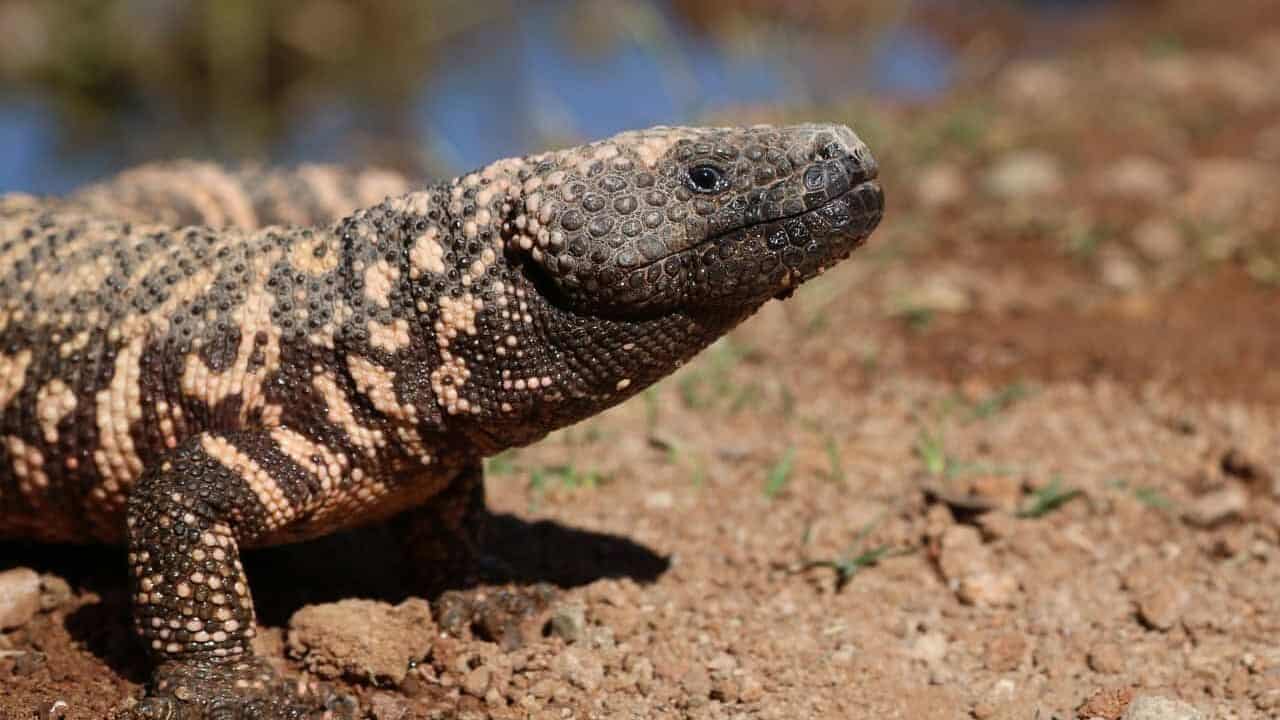
The Gila monster (Heloderma suspectum) is one of only two venomous lizard species native to North America and exhibits primarily nocturnal behavior during the hottest desert months. These distinctive reptiles, with their black bodies patterned with pink, orange, or yellow beading, can reach up to 2 feet in length. Unlike most venomous reptiles, Gila monsters deliver venom through capillary action rather than injection—they bite and hold on, allowing venom to flow into wounds through grooved teeth. While rarely encountered due to their secretive nature, Gila monsters become more active at night during summer, when they emerge to hunt for small mammals, birds, eggs, and insects. These lizards have extraordinarily slow metabolisms and can store fat in their tails and bodies, allowing them to consume just 5-10 meals per year. Their distinctive walking style, with body elevated above the ground, reduces contact with hot desert surfaces. Gila monsters are federally protected due to habitat loss and collection for the exotic pet trade. Scientific interest in Gila monster venom has led to the development of exenatide, a medication used to treat type 2 diabetes, demonstrating the medical importance of preserving these unique nocturnal reptiles.
Bobcats: Stealthy Desert Felines
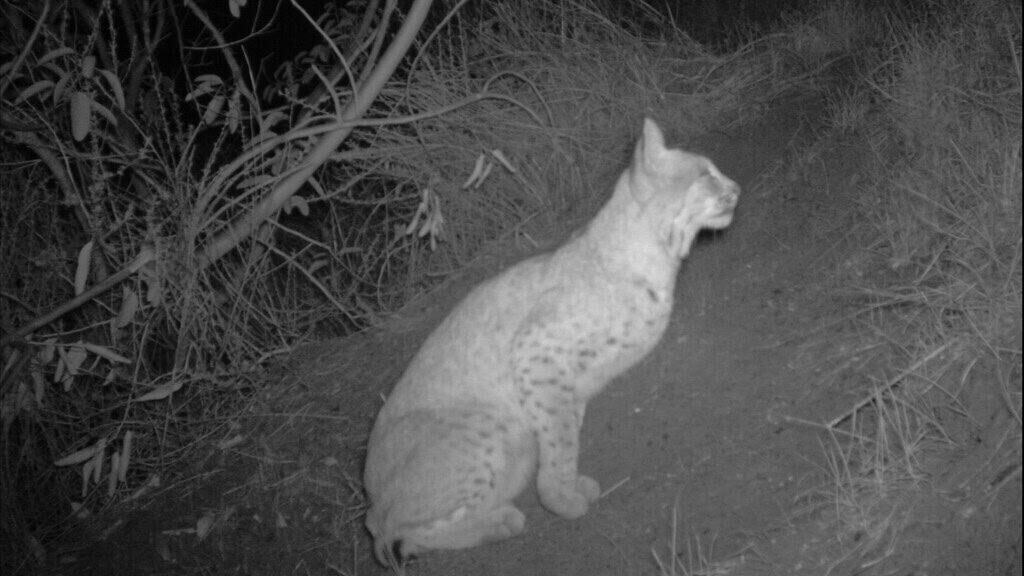
Bobcats (Lynx rufus) are the most successful native feline predators in American deserts, having mastered the art of nocturnal hunting across varied terrains. These medium-sized cats, typically weighing 15-35 pounds, become primarily nocturnal in desert regions to avoid heat stress and target prey that emerges after dark. Desert bobcats exhibit several adaptations for arid environments, including larger home ranges than their woodland counterparts (sometimes exceeding 30 square miles) and the ability to derive most of their moisture needs from the prey they consume. Their exceptional night vision results from a reflective layer called the tapetum lucidum that magnifies available light, allowing them to see in light levels six times dimmer than human perception. Bobcats possess highly sensitive whiskers (vibrissae) that detect air currents and help navigate tight spaces in complete darkness. Their hunting style combines patient stalking with explosive speed—they can leap up to 10 feet horizontally to capture prey. Desert bobcats primarily target cottontail rabbits, jackrabbits, and rodents, but are opportunistic enough to consume birds, reptiles, and even insects when necessary. Despite urban development throughout the Southwest, bobcats have demonstrated remarkable adaptability, sometimes hunting in the transitional zones between desert and suburban developments.
Desert Tortoises: Nocturnal During Heat Waves
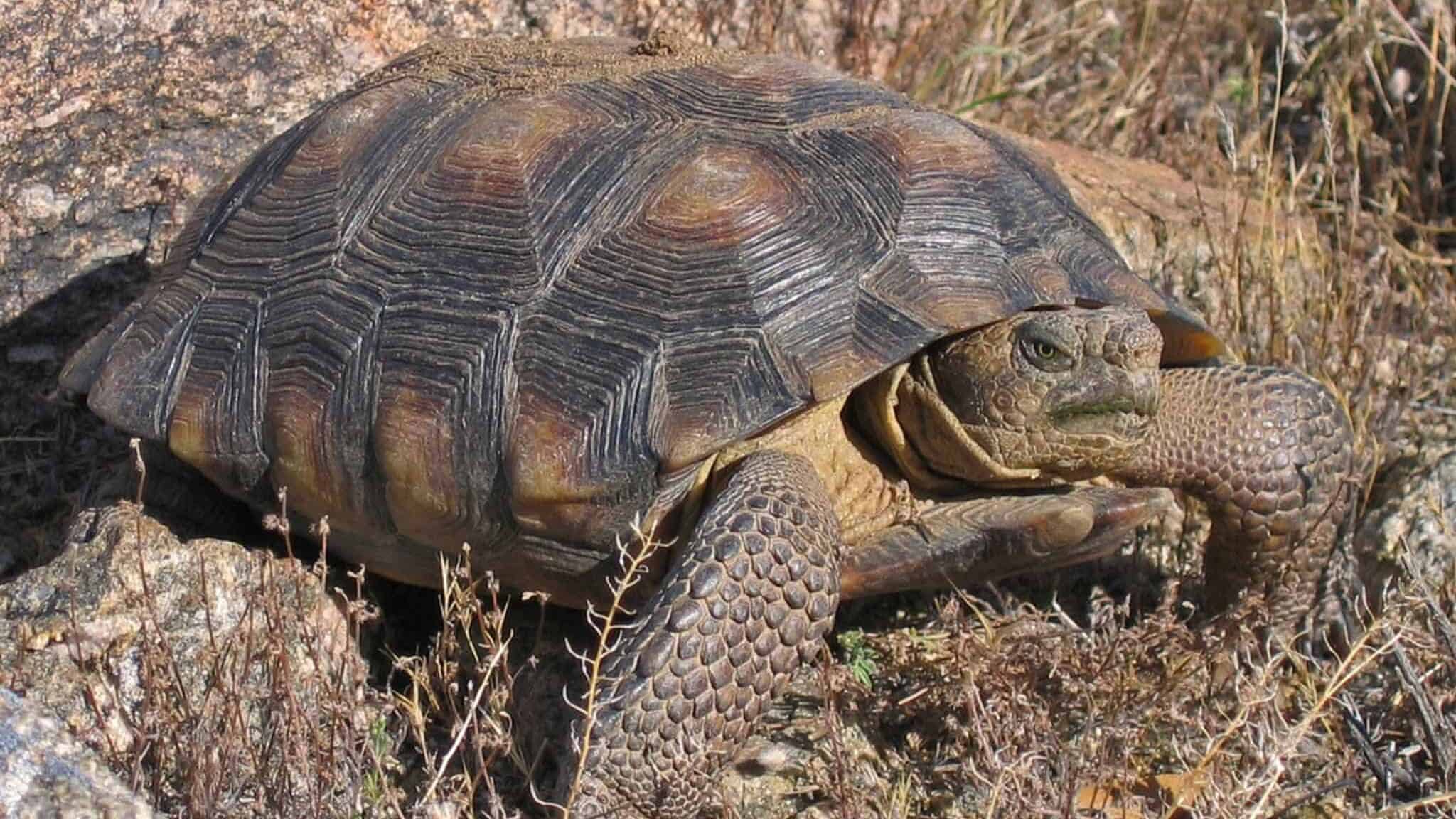
The Mojave Desert Tortoise (Gopherus agassizii) and Sonoran Desert Tortoise (Gopherus morafkai), while primarily diurnal, shift to nocturnal activity patterns during extreme heat periods—a behavioral adaptation that helps these threatened reptiles survive increasingly frequent heat waves. During summer nights, desert tortoises may emerge to forage on cacti, grasses, and wildflowers, taking advantage of plants with higher moisture content due to cooler nighttime temperatures. These ancient reptiles have evolved sophisticated water conservation methods, including bladders that can store over 40% of their body weight in water, urine, and waste products—a crucial reservoir during drought periods. Their metabolic rates can decrease by 95% during estivation (summer dormancy), allowing survival during extended hot, dry periods. Desert tortoises create elaborate burrow systems that can extend up to 30 feet in length and maintain relatively stable temperatures, which they may leave at night during summer months to feed and rehydrate from dew-moistened vegetation. Their specialized shells provide protection from most predators, though kit foxes and coyotes may prey on juveniles during nighttime encounters. Conservation efforts focus on protecting these keystone species whose burrows create habitat for more than 350 other desert animals, many of which are also nocturnal.
The nocturnal animals of America’s deserts collectively form a complex ecological web that maintains the health and biodiversity of these seemingly harsh environments. From the smallest kangaroo rat to the stealthy bobcat, each species has evolved remarkable adaptations that enable survival in conditions that would quickly prove fatal to most organisms. These nighttime wanderers provide essential ecosystem services—pollination, seed dispersal, prey control, and soil aeration—that benefit the entire desert community, including many diurnal species. As climate change intensifies and human development continues to encroach on desert habitats, understanding and protecting these nocturnal specialists becomes increasingly crucial for conservation efforts. The mysterious world of desert night reveals nature’s extraordinary capacity for adaptation and specialization, reminding us that even in the most challenging environments, life finds ingenious ways to thrive in the darkness.
- 11 Incredible Animals Found Only in the Pacific Islands - August 9, 2025
- Why Zebras Roll in Dust and Mud - August 9, 2025
- America’s Most Endangered Mammals And How to Help - August 9, 2025

